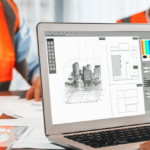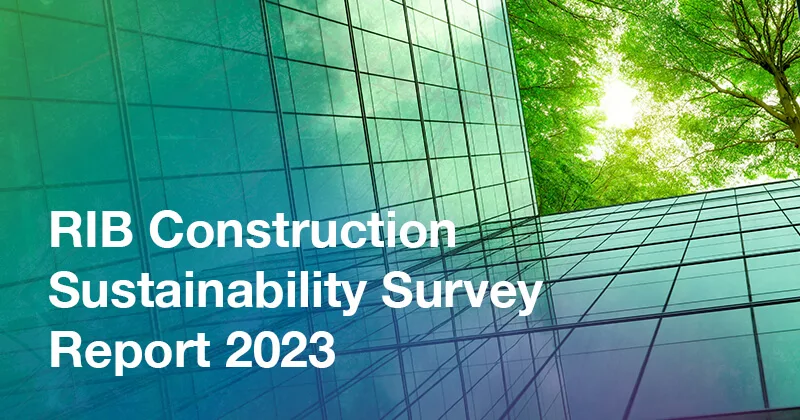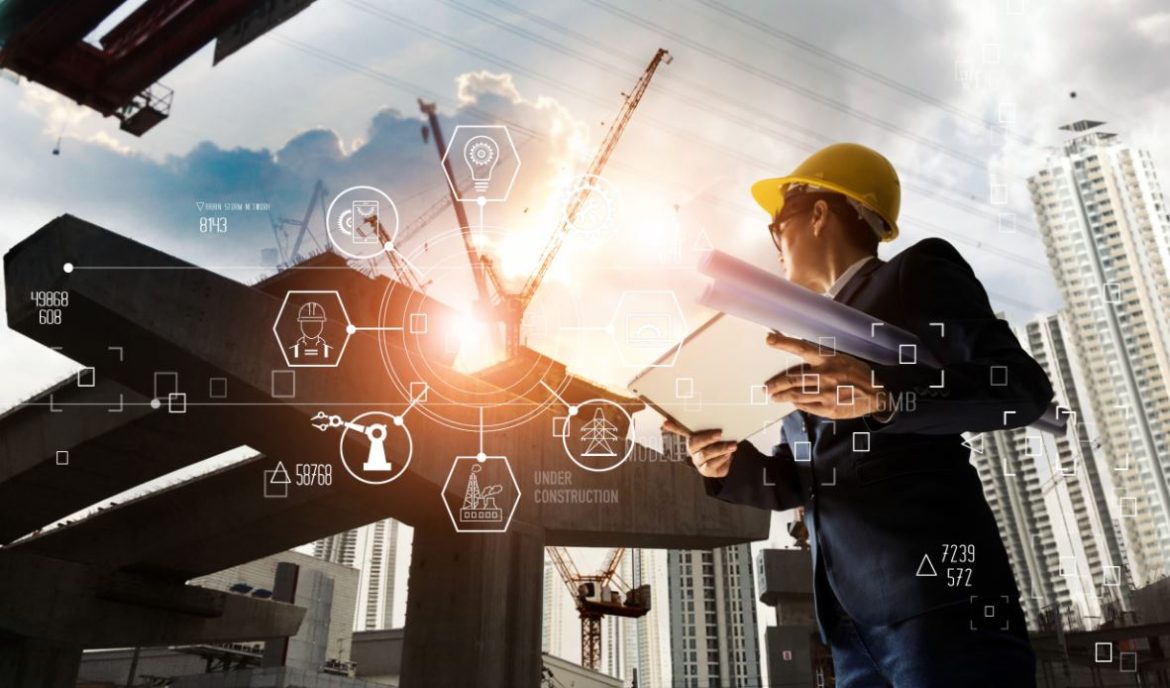22 mins read
The Construction Industry Is Getting Greener: Why, What And How To Be Part Of The Change?
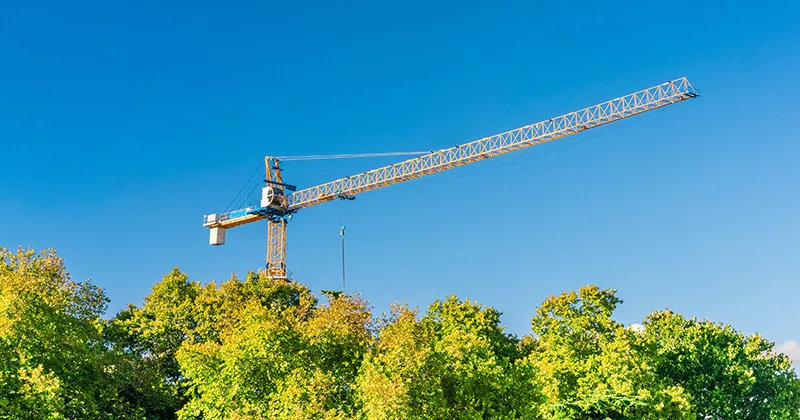
- Sustainability: A Complex Issue for Construction Companies
- Three Factors Influencing Sustainable Change
- The Biggest Challenge: A Lack of Visibility. ConTech and collaboration is the enabling solution.
- What are the first steps to consider embedding sustainability into your company’s strategy when being in AEC
Environmental sustainability and the energy-intensive construction industry don’t often go hand-in-hand. The construction industry is a massive consumer of raw materials and natural resources, and it generates an estimated 39% of the world’s carbon emissions according to the World Green Building Council.
However, there is some good news. The sector is gradually becoming more sustainable despite many conflicting goals and complex challenges.
In a recent global survey by SAP across multiple sectors including the AEC, we have seen that executives in the engineering and construction industries have made the most progress toward sustainability in the design phase, where 47% of respondents said sustainability is top-of-mind or a major concern.
Sustainable design and project execution will be critical as construction companies seek to reduce their energy consumption in completed buildings. However, the survey also revealed that executives are more likely to have set sustainability goals rather than to have taken concrete action to achieve those goals, according to the survey of 1,000 respondents from industries globally.
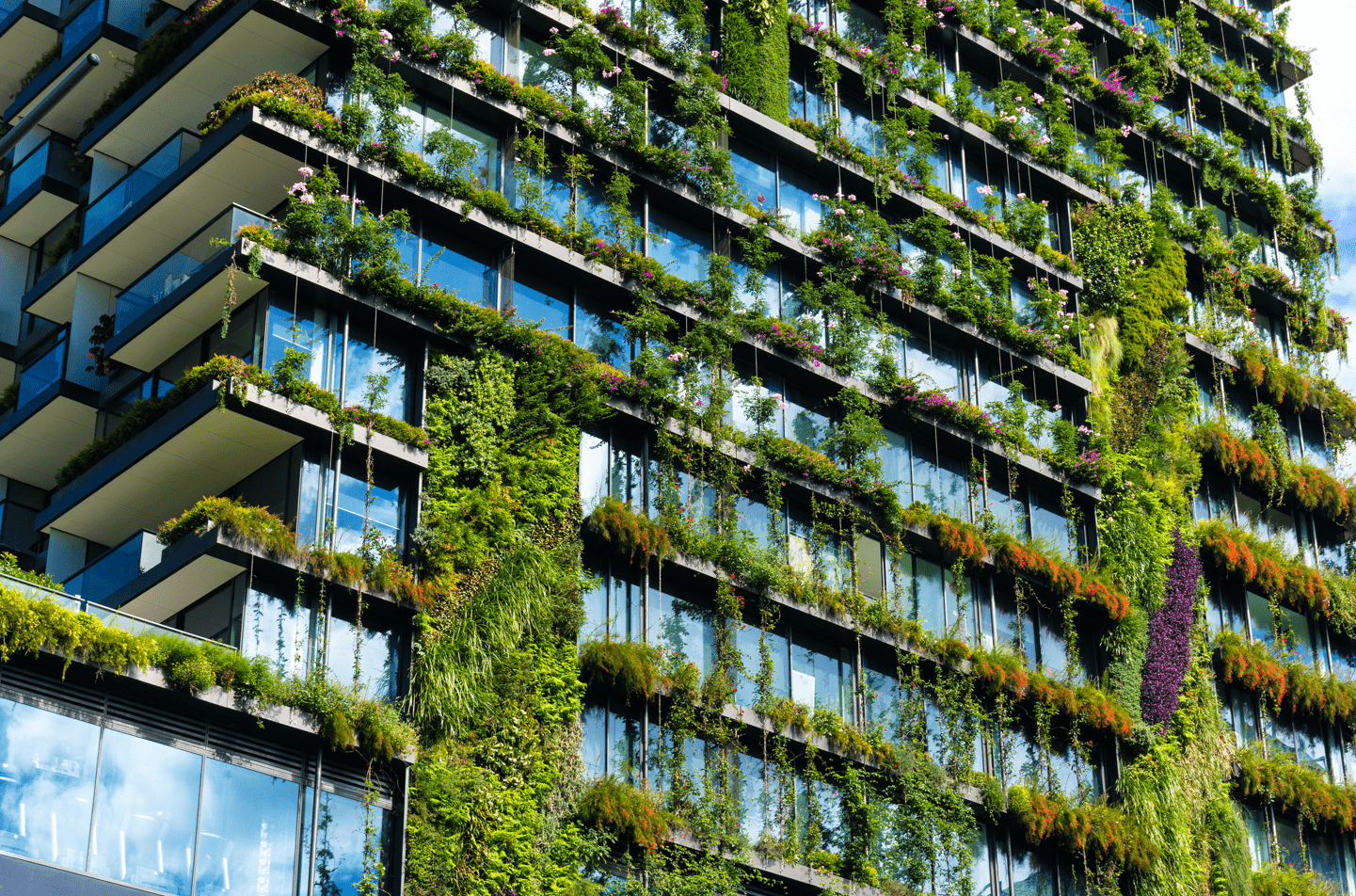
Sustainability: A Complex Issue for Construction Companies
Sustainability is just one aspect of the deeply complex construction industry that grapples with increasingly stringent regulations on health and safety and sustainability.
Engineering and construction leaders face a number of competing pressures as they try to control costs and maintain efficient processes with multiple suppliers and subcontractors, and also focus on reducing energy costs and carbon footprint while using energy-intensive heavy equipment.
All of this is on top of trying to develop structures that are scalable, taller, greener, healthier and more technologically advanced than ever before.
The industry recognizes the need to address these urgent and often competing issues, especially within their supply chains. According to the survey, 59% said a sustainable supply chain is a competitive differentiator, but 47% said increased process complexity is an obstacle to meeting their sustainability goals.
Managing the complexity of construction projects is challenging throughout the lifecycle starting right from when a company is awarded a project, through to hiring the right people, getting the right materials, supplies, and equipment to the site, and building the structure to completion on time. Then there is ongoing operation and maintenance of the finished project. Trying to incorporate sustainable practices into all of these areas is an escalating challenge.
Three Factors Influencing Sustainable Change
1. Increasing government regulations: New regulations, such as the Construction Products Regulation (CPR) and the European Green Deal, are demanding increased environmental measures, which place more scrutiny on how projects are designed, constructed, and maintained. The United Nations has announced several ambitious targets for sustainability in construction. For example, the target reduction rate for energy intensity per square meter in buildings will be approximately 30% by 2030, as defined by the Paris Agreement. Increased regulations are pushing engineering and construction companies to look for more circular and sustainable solutions. The fundamental change here is, that buildings with a higher emission both form execution and operations, will become more expensive to own and operate. Thus, sustainability must find a way to be embedded in the way owners plan, and how GC’s and the supply chain executed to avoid rework, waste and minimize embodied carbon.
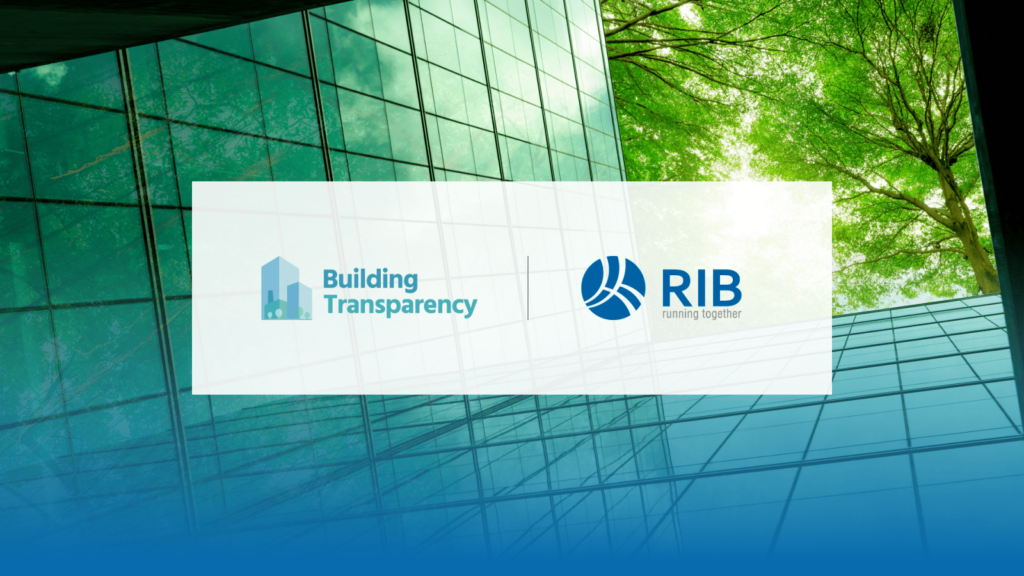
RIB backs embodied carbon measurement technology to improve the building industry’s sustainability
RIB Software, a multinational providing innovative technology solutions to the architecture, engineering and construction (AEC) industry, has partnered with Building Transparency, a non-profit organisation that has developed an open access technological tool targeted at reducing the impact of embodied carbon and making the AEC industry more efficient and sustainable.
2. Controlling costs: Cost-efficiency is still a key consideration for most engineering and construction companies. As the cost of raw materials continues to climb, business leaders need to plan and manage construction projects using the most cost-effective products and raw materials possible, while ensuring workers and heavy machinery are not sitting idle. If sustainable materials or processes are too expensive, decision-makers may choose not to use them.
In the survey, half of the engineering and construction respondents said lowering the cost of sustainable products would make the biggest difference in helping them meet their sustainability goals. On the other hand, reducing the high cost of energy consumption will lower costs while also improving sustainability efforts for this energy-intensive industry. This correlates very much with being able to estimate carbon – both embodied and scope 3, which is about creating visibility and make mindful choices understanding the causal nature of changes and choices.
Here RIB pledged sponsorship with Building Transparency and our clients can already find our first initiate with the world’s first EPD based and embodied carbon calculator in our RIB CostX estimation offering.
3. Expanding environmental concerns: A growing number of customers and owners are pressuring engineering and construction companies to design and build more eco-friendly structures. As demand for environmental considerations builds, a growing number of investors, and even employees are questioning traditional construction methods and pushing for more sustainable business practices.
With the worlds collective mind on 6D and sustainability, there will be a gravitas towards the greener option, and surely this is an emerging mega trend. We as consumers will opt for a building with a better life-cycle profile than one which is more “black” and as such sit on a different section of the demand equilibrium most likely sell favorable for the owners throughout it’s lifecycle. 6D and sustainability is not just a choice, it is a key differentiator and a smart strategy hedging the emerging megatrend, which ties to the following topic of visibility and how tech can enable these choices.
The Biggest Challenge: A Lack of Visibility. ConTech and collaboration is the enabling solution.
While many engineering and construction companies have made sustainability plans and commitments, the survey shows that few have taken concrete steps to realize their sustainability goals. That’s because a lack of visibility is a major issue when it comes to monitoring sustainable practices in their own processes as well as with their subcontractors and supply chains.
For instance, when it comes to sustainable sourcing of required raw materials, just over half (55%) of engineering and construction companies have significant or complete visibility into their own processes, and only 16% have the same visibility into their suppliers’ processes.
And when it comes to the ethical sourcing of necessary labor, only 50% have significant or complete visibility into their own processes, and just 17% have the same level of visibility into their suppliers’ labor-related processes.
There are some areas, however, where the construction industry is making progress. For example, 58% of engineering and construction firms said they have reduced overall energy consumption, and some innovative companies are developing sustainable building materials that release lower carbon emissions and actually absorb carbon dioxide and heat from the environment.

Here I believe technology plays an important role, to empower the value chain from owner, consultants, GC’s, Sub’s and suppliers to make the right choices and understand the impact. Simulating sustainability impact in the planning phase and minimizing embodied carbon. Enabling collaboration in execution across the contractual boundaries, to minimize deficiencies and rework and the cost not only of delay and cost overruns, but also waste and harmful emission, which could be avoided. This situational awareness comes from visibility, and this visibility from the suite of ConTech tools you bring into your programs from planning, build and collaborate.
– Mads Bording
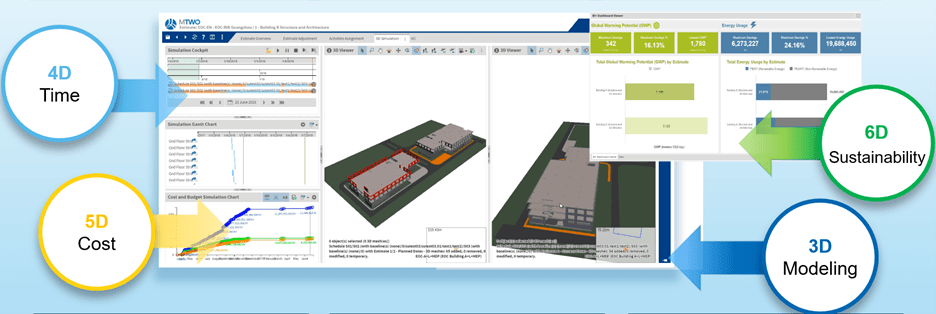
What are the first steps to consider embedding sustainability into your company’s strategy when being in AEC
- Create a long-term strategy that considers sustainability in every process from start to finish.
- Source materials ethically and ensure labor standards and fair humanitarian practices are in place with all subcontractors and suppliers.
- Implement sustainable design, engineering, and construction practices powered by relevant data to track, measure, and reduce emissions and waste throughout the project lifecycle.
- Use logistics processes that optimize deliveries to reduce mileage, emissions, and carbon footprint and set up to scope 3.
- Operate assets and equipment in an energy-efficient manner that is safe for the environment and for the workforce.
- Introduce technology in the pockets that are the root cause of emission blowouts e.g. carbon estimation and analyzing embodied carbon. Connect the teams via common tools and connected ConTech CDE to allow for elimination or risk instead of distribution making emissions real rather than avoid them.
As more executives realize that sustainable choices are actually good for business, more engineering and construction companies will set sustainability commitments and adopt sustainable practices into more aspects of their business. Now is the time to take action to balance the bottom line with the green line in the engineering and construction industry.
ConTech tools is only half of the equation, the second part is the human aspect, where executives need to make sustainability a choice – however, this may just be very good for business and a way to generate more long-term shareholder wealth by actually just doing what is right.
Here at RIB Software, we’re driven by disruptive digital technologies, industry best-practice and trends, and have made it our purpose to propel the industry forward and make engineering and construction more efficient and sustainable. That includes supporting the development and availability of world-leading solutions that empower industry professionals to quantify, measure, report on and compare embodied carbon across the project lifecycle. And we’re not stopping there, in-progress development sees our solutions ultimately enabling better design and procurement decisions factoring in cost, time and carbon in order to mitigate and eliminate embodied carbon used across the life of a building.
Most Recent
22 mins read
22 mins read
15 mins read
49 mins read
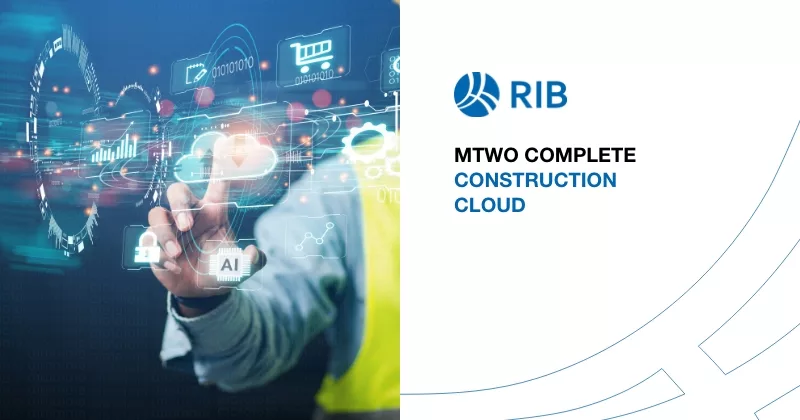
E-BOOK
